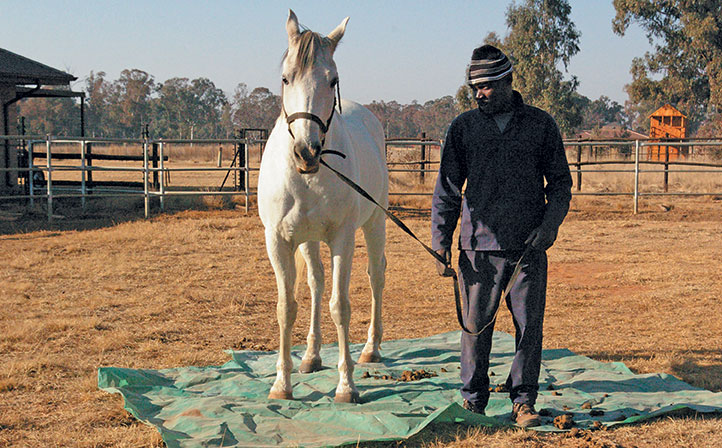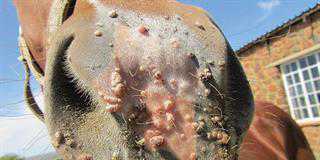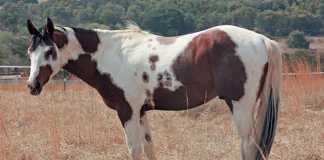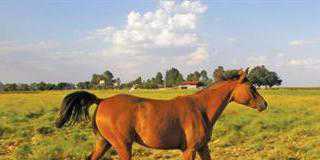
Photo: Kim Dyson
Riding an unschooled horse is always risky. Ideally, therefore, a horse should be handled from a very young age and schooled for years to make it a safe ride.
This practice is invariably followed in Europe, but less so in South Africa. Here, all too often, horses are rushed through the crucial steps required to make them safe.
Working with a green horse requires patience and consistency, as it needs to fully understand what is being taught. With the average horse weighing around 500kg, it’s essential that it knows what is allowed and what is not.
When a horse is in a situation that it perceives as dangerous, it will respond either by instinct, or according to what it has been taught. A properly trained horse that trusts you will likely react with learnt behaviour, but there is an exception to this rule!
Shying
One moment you’re riding through the countryside, and the next you find yourself on the ground, watching your horse gallop home without you, all because your horse shied and you weren’t expecting it.
Shying is not only irritating, it can also be very dangerous.
The practice can also become irritating for you, as the horse may be constantly scared by irrelevant objects in the environment, and be unable to concentrate on its work.
Such a horse seldom develops the correct muscles. It also means that you, as the rider, cannot relax.
A horse will shy if it is truly scared or if it doesn’t trust its rider. However, the more common cause is that it is overfed, underworked, and playful or excited.
A horse is also more likely to shy if the rider is too harsh on the reins. As the horse is expecting something to happen with the reins, it tenses in anticipation.
This can be a vicious circle; if you’re tense, your horse will be tense.
Treatment
In my many years of working with horses, I’ve come to realise that it is simply not in a horse’s nature to think up ways to evade work. Horses are not ‘naughty’; they are simply ‘uneducated’.
Knowing how to teach a horse is an art. When horses were our transport, we understood this.
If your horse’s fear is genuine, walk it quietly up to the source and let it get used to the ‘frightening object’. This will give the animal the confidence to pass it next time.
Never pat a horse after a shy. This might teach it that it is doing the right thing.
If you find that shying has become a habit, the best course of action is a firm approach.
Be confident; this makes the horse feel safe.
Keep your legs firmly around the girth and ride it past the objects that cause it to shy.
If your horse trusts you, it should know that you would not harm it.
New things
Spend time getting your horse accustomed to new things. Get large pieces of plastic and long-line the horse over them. Introduce it to ‘scary objects’ in the safety of a lunge arena.
Give it time to investigate these.
You will notice that the more often you introduce your horse to potentially ‘scary’ objects, the less afraid it will be.
Kim Dyson breeds Arabians and Lusitanos, and has 22 years’ experience in holistic equine and human body work.













